Few battleships during the Second World War were as specialized as the Iowa class battleships of the United States Navy. Unique designs built with an emphasis on speed, few of their dreadnought contemporaries could keep up with them. However, there was one notable exception, the Richelieu class battleships of the French Navy. These powerful battleships could exceed 32 knots in speed, almost matching the Iowa class. Though they were almost as fast, they lagged behind the American ships in firepower and armor, not surprising considering they were 35,000-ton “Treaty” battleships. However, the Richelieu class was to be succeeded by an even larger and more powerful design, the Alsace class battleships. These dreadnoughts, designed to the new maximum allowable displacement of 45,000 tons would allow them to match the Iowa class in size. In this article, we compare the Iowa class vs Alsace class, seeing how these two mighty dreadnoughts would have compared with each other.
Important Consideration
Before continuing, it’s important to point out that the data on the Alsace class is not complete. Being unfinished designs, the best we have to work with are the original design specifications. Furthermore, the Alsace class was still divided among three potential design variants. Though allowed up to 45,000 tons, French designers were unsure if they would need the maximum size. Designs ranging from 40,000 to 45,000 tons were being developed without a clear choice by the time construction ended. It’s still a matter of debate on which design France would ultimately choose. For the purposes of this article, we are going to use the largest and most potent of the designs, the 45,000-ton No. 3 design. This design was the closest to the Iowa class in terms of size and capability. This similarity should provide us with the most interesting comparison. Without further delay, let’s dive in!
Background Behind the Design
Alsace Class
Both the Iowa and Alsace classes were among the largest battleship designs of all time. However, both of them owed their considerable size to the Second London Naval Treaty, specifically the “escalator clause”. The escalator clause was an addition that would allow for the construction of larger battleships in the event any signatories failed to abide by the Treaty. Specifically, it would allow for the main gun calibre of battleships to be raised from a 14″ maximum to 16″. After some additional negotiating, an increase in size was also included that would raise displacement limits from 35,000 tons to 45,000 tons.
The three proposed designs for the Alsace class were designed with the escalator clause in mind. Design 1, a smaller 40,000-ton design intended to counter the H class, which were originally believed to be 40,000 tons themselves. Design 2, an intermediate 42,500-ton design that was scaled up to accommodate guns of 16″. Lastly, there was design 3. This design was intended to take full advantage of the escalator clause, matching the largest potential battleships that could be built.
As we mentioned earlier, France was still in the process of deciding what design they would choose for the Alsace class. France preferred the smallest design at first, believing that no European power would waste money on very large battleships. The 42,5000-ton design was quickly disregarded due to France having no experience with 16″ naval guns. The 45,000-ton design would require considerable enhancements to France’s shipbuilding capability due to its size. It would ultimately come down to the 40,000-ton or 45,000-ton designs due to their use of 15″ guns. However, no definitive choice was ever made prior to the German occupation. Scholars still argue if the 40,000-ton design would be chosen or the larger 45,000-ton design we are looking at. Regardless, France had ordered improvements to its shipyards, including the enlargement of its facilities that would have allowed handling of battleships up to the size of No.3. France might not have made up their mind, but was certainly preparing to handle either design.
Iowa Class
The design process behind the Iowa class battleships was not quite as complicated as the French ships. The Iowa class was born from a simple goal, producing a battleship capable of countering other fast dreadnoughts such as the Kongo class. This heavy emphasis on speed resulted in a unique design, one that differed from the traditional designs preferred by the United States Navy. Unlike previous designs, bound by 35,000-ton restrictions, the Iowa class took advantage of the escalator clause. This allowed for a larger design that could accommodate the bigger powerplant needed for high speeds.
While France was hobbled by its shipbuilding capability, the United States was bolstered by it. They did not have to invest in expensive harbor improvements to support larger warships (In fact, the only major restrictions on US designs at the time was the Panama Canal and East Coast Bridge Heights). For this reason, once the Iowa design was finalized, the US was able to rapidly begin construction in 1940. Six battleships would eventually be ordered, with four completed. While never getting to fulfill their original role of intercepting fast Japanese heavy units, the high speed of the Iowa class did prove useful when serving as escorts for carrier groups. The Iowa class would go on to have long and distinguished careers as the last battleships to be built by the United States Navy.
General Characteristics
As far as size goes, the Iowa and Alsace classes were very similar, not surprising given they were both designed to take advantage of the escalator clause. At 45,000 tons, both battleships were very close in overall dimensions. The biggest differences came due to outside factors that influenced aspects of each design. The Iowa class, being restricted by the width of the 110′ locks on the Panama Canal, had a relatively narrow beam of 108′ 2″ (33m). This forced the United States to adopt a longer hull of less efficient shape to retain sufficient volume. The Alsace class would not have had to contend with this beam restriction, allowing them to have a fuller, more efficient hull form with a maximum beam of 116′ 6″ (35.5m).
On the other hand, the French Navy was mindful of the battleship’s draft as French harbors were relatively shallow (Though work was to be done to dredge out port facilities). For this reason, the Alsace class was designed to have a slightly shallower draft of 31′ (9.3m) compared to the Iowa class.
At full load, the displacement of the Iowa class would have swelled to a maximum of about 57,500 tons. France calculated the Alsace class at a full load displacement of 50,700 tons. However, had the Alsace class been built, I imagine they would have seen their full load displacement grow significantly due to additional equipment and anti-aircraft weaponry. Based on the growth of the Richlieu class, I think it is safe to say that the Alsace class would have grown to over 55,000 tons easily.
Though both ships were relatively similar in size, the real difference was how they used their tonnage for weaponry, armor, and propulsion. As we dive into these details further into the article, the differences between the two dreadnoughts become more obvious.
| Specifications | Iowa Class | Alsace Class (No. 3 Design) |
| Date of Design | 1938 | 1939 |
| Length | 887′ (270m) | 869′ 5″ (265m) |
| Beam | 108′ 2″ (33m) | 116′ 6″ (35.5m) |
| Draft | 34′ (10.6m) | 31′ (9.3m) |
| Full Load Draft | 37′ 2″ (11.3m) | Unknown |
| Standard Displacement | 45,000 Long Tons | 45,000 Long Tons |
| Full Load Displacement | 57,540 Long Tons | 50,700 Long Tons |
Speed and Machinery
Both the Iowa and Alsace classes were designed to take advantage of the escalator clause. However, in addition to their standard displacement of 45,000 tons, both battleships were also similar in that they were designed to be proper fast battleships. The Iowa class might have been the fastest class of battleship to ever go to sea, but the Alsace class were not far behind them. Had they been completed, few contemporary battleships would have been able to match the Alsace class in speed.
Designed for high speed, the Iowa class was equipped with the most powerful machinery ever fitted to a United States battleship. The Iowa class was powered by eight Babcock & Wilcox boilers that fed four turbines (General Electric Models for Iowa and Missouri, Westinghouse models for New Jersey and Wisconsin) each driving their own shaft. Each of these shafts was connected to its own screw (18.25′ four-bladed screws outboard, 17′ five-bladed screws inboard). The powerplant provided a total of 212,000shp (not counting design overload), a massive leap from the 130,000shp of the proceeding South Dakota class. This was powerful enough to drive the dreadnoughts to a top speed of just over 33 knots on their standard displacement. At full load, the maximum speed dropped slightly to 32.5 knots, though this was still sufficient to outrun most ships.
In addition to speed, the United States Navy made sure that the Iowa class would have enough range to operate in the vast expanses of the Pacific. Over 8,000 tons of fuel would be carried to ensure a range of over 15,000nmi at a cruising speed of 17 knots. This ample amount of fuel would allow the ships to operate away from port or support ships for longer periods of time. It was also found that the battleships could operate as armoured tankers for their escorts, transferring fuel to them to increase their operating range and increasing the flexibility of the fleet as a whole.
The Alsace class, though unfinished, would have almost certainly carried a powerplant based upon that used in the Richelieu class. The Richelieu class battleships used an experimental powerplant design using new forced circulation boilers of Sural design and built by Indret. This powerplant ultimately proved itself extremely effective, being both compact and reliable. They would have been carried over into the Alsace class, giving them the same compact machinery space as well as having their exhausts funneled through a mât-cheminée (chimney mast or “mack” as it was known in the US Navy), giving them a small superstructure. Steam from the boilers would have fed four Parsons, each turning their own associated shaft and screw. Total power was to be about 220,000shp. This was calculated to allow a top speed of 32 knots. While it will never be known if the ships could have reached that speed, I believe it was possible given the exceptional performance displayed by the Richelieu class.
Unlike the United States, France did not have to contend with the Pacific to the same degree. For this reason, Range was not as important for the Alsace class. I believe they would have maintained about the same range as the proceeding Richelieu class at around 9,500nmi. Of course, seeing as how the Richelieu class was modified to increase their fuel capacity, it’s possible such modifications might have been carried over to the Alsace class, giving them a larger operating range.
Both the Iowa and Alsace classes were extremely fast battleships, being able to outrun all of their contemporaries. Both of them used powerplants of similar power though the Iowa class used more basic boiler designs while France opted for more high-tech models. Outside of their speed, there were some subtle differences. The Iowa class would have likely carried a greater amount of fuel compared to the French dreadnought, granting it a greater range. The Iowa class also would have used a twin rudder setup while France tended to prefer a simple single rudder.
| Powerplant Specifications | Iowa Class | Alsace Class |
| Power (SHP) | 212,000shp | 220,000shp |
| Designed Top Speed | 33 Knots | 32 Knots |
| Maximum Top Speed | 32.5 Knots | |
| Boilers | 8x Babcock & Wilcox Boilers | Unknown, but likely 6x Sural Boilers |
| Turbines | 4x General Electric / Westinghouse Turbines | 4x (Likely) Parsons Turbines |
| Screws | 4x Screws (18.25′ Diameter Outboard, 17′ Diameter Inboard) | 4x Screws (Unknown Size) |
| Rudders | 2x Rudders, Semi-Balanced Design | 1x Counterbalanced Rudder |
| Fuel Capacity | 8,841 Tons | Likely around 5,800 to 6,500 Tons |
| Range | 15,900 Nautical Miles | Likely around 10,000 Nautical Miles |
Armor Protection
If you were surprised by how close the Iowa and Alsace classes were in the powerplant department, prepare to be amazed at how similar they are in armor protection. While navies experimented with various armor schemes that were tailored to the environment in which the ships were to operate, the French and United States Navies had adopted very similar armor arrangements for similar reasons!
Vertical Protection
Iowa Class
The armor of the Iowa class was heavily based on the proceeding South Dakota class with only minor improvements. This included an “internal” armored belt. An internal armored belt differed from standard practice in which the armor was attached to the outside of the hull. A belt carried internally was actually buried deeper inside the hull, hidden under the outer hull plates. This could be done for a variety of reasons, but one of the biggest was that it allowed the use of more heavily inclined armor belts without negatively impacting the ship’s waterline beam (inclined external belts would cause the hull to narrow the deeper they went), which would hurt stability. Testing had actually revealed this arrangement to be less effective as an external belt (due to the fact that shells did penetrate the hull before reaching the belt itself), but it did offer the advantages of better protection in relation to weight. To put it simply, internal armored belts allowed for substantial weight savings. As the South Dakota class was built to provide protection against 16″ guns while still reaching the 35,000 ton limit, this internal belt was the only way in which suitable armor could be carried. This armor scheme was then carried over to the succeeding Iowa class.
The armor belt of the Iowa class was 12.1″ (307mm) thick (mounted on a 22mm STS backing plate) and was inclined at 19 degrees. The incline of the belt increased the armor’s relative armor thickness, increasing its ability to withstand heavy calibre shells. It was calculated that this armor would be equivalent to about 17″ (431mm) at a combat range of 19,000 yards. This armor belt was buried beneath an outer hull plate of 1.5″ (38mm). Contrary to popular belief, this outer hull plate would not add much to the protection other than resisting light weaponry and (possibly) weakening incoming projectiles (through decapping/inducing yaw). An added benefit to the inclined belt arrangement was that it continued all the way to the bottom of the hull. This gave the ships somewhat of an advantage in that they could better resist diving shells (some heavy caliber shells could strike just short of the target. However, their momentum would carry them for some distance underwater. In theory, this could allow them to bypass the main armored belt altogether.) We will cover this in further detail in the Underwater Protection section of the article.
This armor protection was sufficient against earlier 16″ weapons used by the United States Navy (A concept known as balanced armor when a battleship was protected against its own guns). However, during the development/construction of the Iowa class, the United States debuted the Mark 8 Super Heavy shells. Coupled with the more powerful 16″/50 Mark 7, the guns almost completely overmatched the armor protection. Still, for the most part, the Iowa class would have remained relatively well protected against most threats it would face (Including most battleships in service at the time). However, the US Navy was aware that the armor was restricted by the size of the battleship. For the following design, the Montana class, designers were able to utilize a much more effective system.
Alsace Class
Of all the attributes of the Alsace designs, the Armor is the most difficult to discuss. This is due to the fact that the armor layout was never properly designed. The only figures that are available to work with are the requested armor thicknesses. However, France had found the armor systems used on the Dunkerque and Richelieu classes to be more than adequate. Based on this, it is highly likely that France would have adopted a similar armor scheme for the Alsace class. Using the Richelieu class as a base, we can develop a rough estimate of how the armor system might have looked and performed.
Just as the United States used an internal armored belt for weight savings, so did France. The Richelieu class utilized a 327mm (12.9″) armor belt inclined at 15 degrees. This armor belt did not continue down to the bottom of the hull, instead being about 6.25m (20.5′) tall. The armor of the Alsace class would have been similar, though improved based on data gained from the proceeding designs. The Alsace class would have used a thicker armor belt of 350mm (13.8″) and probably inclined at roughly 15 degrees. Teak backing of around 18mm to 20mm likely would have been mounted along with the armor belt. The height of the armor belt would have likely been roughly equivalent to the Richelieu class at 6.25m (20.5′).
If this protection was not formidable enough, it would have been further supported by additional layers of armor behind it. The Magazines and machinery spaces would have been covered by a secondary armored deck. Mounted under the primary armored deck, the purpose of this armor was to catch spalling from the impact of shells against the armor and to catch any shrapnel from projectiles that managed to penetrate inside the battleship. The edges of the armored deck would slant down to the bottom edge of the armored belt. At a minimum, this armor would have been about 50.8mm (2″) thick. At an angle of 45 degrees, this would have increased its effective armor thickness even further. Between the two armored decks would have been another layer of vertical armor. Roughly 25mm (1″) thick, this armor would have also served to catch spall/shrapnel.
Altogether, this would have been a very intricate system. Not only did France consider catching incoming projectiles, but they also put considerable thought into minimizing any damage that might get past the primary armor. A well thought out system that did not negatively impact performance in other areas (You will see what I mean later on!).
Horizontal Protection
As aircraft and long-range gunnery became more prevalent, a battleship’s deck armor (horizontal protection) became just as important as vertical protection. Heavier and more intricate armor layouts were introduced with each successive class of dreadnought. As some of the final dreadnoughts to be developed by their respective nations, both the Iowa and Alsace classes featured comprehensive armor protection to deal with threats coming from above.
Iowa Class
The horizontal armor protection of the Iowa class was heavily based on the proceeding South Dakota class with minor modifications. The horizontal armor scheme was made up of three layers of armor designed to support one another in various ways.
The top layer of armor stretched along the top of the hull as the weather deck. This armor was thinner, being roughly about 1.5″ (38mm) thick. This was enough to resist splinters and light weapons, though not enough to resist heavy projectiles. For the heaviest projectiles such as battleship shells and armor-piercing bombs, the upper weather deck was intended to support the primary armored deck by reducing the efficiency of those projectiles. This was accomplished by reducing the velocity and inducing yaw against projectiles as they penetrated the weather deck. It should also trigger the fuse of armor-piercing bombs. By reducing the performance of incoming projectiles, the weather deck better increased the ability of the main armored deck to defeat them.
Speaking of the main armored deck, this was the second layer of horizontal armor protection. The main armored deck was 6″ (152mm) thick and stretched over the magazines and machinery spaces. The main armored deck was intended to withstand the impact of heavy calibre shells and armor-piercing bombs, keeping them from penetrating the vitals.
The main armored deck was further supported by a splinter deck that ran under it. The splinter deck ranged in thickness from 1″ (25mm) over the magazines to .63″ (16mm) over the machinery spaces. It was hoped that this armor layer would not come into contact with incoming projectiles. Instead, it would only catch spalling and shrapnel that might be dislodged from the primary armor deck, preventing them from entering the vitals.
Overall, the horizontal protection of the Iowa class was made up of one primary armored deck and additional layers of armor intended to further enhance it. Overall, a very successful layout and perhaps the most effective of the various armor components of the Iowa class. While the underwater protection and belt armor would be changed, successive designs retained multi-layer protection of Iowa class, a testament to its effectiveness.
Alsace Class
Like the vertical armor protection, it is all but certain that the armor system would have closely followed the Richelieu class. Like the Iowa class we saw previously, the Alsace class would have had a multi-layer system of armor layers to provide the best protection against incoming projectiles.
The primary armored deck was mounted high up in the hull, stretching across the top armor belt, stretching over the vitals. The armored deck over the magazines was to have been 180mm (7.1″) while the portions covering the machinery spaces were to have been slightly thinner at 170mm (6.7″). The height of the armored deck would have ensured that the battleship would have large amounts of protected volume. The Alsace class would have been able to remain afloat even after sustaining heavy damage/flooding outside of the citadel space.
Further horizontal protection was provided by the secondary armored deck we mentioned previously. The flat portion of the secondary deck, being about 40mm (1.57″) thick, would have protected the vitals from spalling/shrapnel that might break off the primary deck. This secondary deck was continued all the way to the stern of the battleship. Here it would have been enhanced to protect the steering and propulsion components. If the Richelieu armor scheme was followed, the Alsace class would have 150mm (5.9″) over the steering gear and 100mm (3.9″) between the steering gear and the citadel.
The Richelieu class already had a very extensive armor scheme that provided great protection against bombs and long-range gunfire. The Alsace class would increase this protection even further with a stronger main armored deck. This would have made it roughly equivalent or superior to most of its contemporary battleships.
**Note**
The book British, Soviet, French, and Dutch Battleships of World War II by William Garzke & Robert Dulin speculate that the horizontal protection would have been reduced slightly in favor of a thicker armor belt. While I generally agree with most of their speculations on the Alsace class, I disagree with this one. I believe France would have recognized the growing threat of aircraft and long-range gunfire, reinforcing the need to retain a heavily protected armor deck.
Underwater Protection
Just as horizontal armor protection took on greater importance during the Second World War, the same applied to underwater protection. Torpedos and mines were getting more dangerous, requiring more comprehensive systems of torpedo belts and internal subdivision to withstand them.
Iowa Class
The underwater protection system of the Iowa class is somewhat unique in that it utilized the same basic layout as the proceeding South Dakota class. However, the United States had already recognized the shortcomings of the South Dakota class system, but it was too difficult and too late to change the system. Instead, designers attempted to modify the system as much as possible to make it more effective.
The Iowa class used a torpedo defense system that was multi-layered, utilizing four vertical bulkheads (each designed to absorb as much of an underwater blast as possible before failing, reducing its strength before it reached the next bulkhead) mounted behind the outer hull plating. The bulkheads encompassed void spaces that were either liquid loaded (to slow down shrapnel) or filled with air (to dissipate the shockwave from an underwater detonation).
For the Iowa class, the two outermost void spaces were liquid filled while the inner two spaces were air-filled. The third torpedo bulkhead was made up of the armored belt that continued all the way down to the bottom of the hull, making it considerably thicker than the other bulkheads. This allowed the torpedo bulkhead to defeat diving shells, even the heaviest calibre shells fired by other battleships. This heavy armor protection was also effective in stopping shrapnel created by an underwater explosion. The entire system, from the outer hull to the interior holding bulkhead, was about 17.9′ (5.46m) deep. The depth of a torpedo defense system was perhaps one of the biggest measurements of success. The deeper a system, the better chance it had to absorb an underwater detonation before reaching the vitals.
While a decent enough system given design restrictions, the underwater protection of the Iowa class was actually less than that found on prior US battleships (such as the North Carolina class). This was due to the fact that the Iowa class battleships utilized an underwater protection system that was a double-edged sword. While effective in stopping underwater shells, designers found that the lower belt was far too rigid to effectively stop explosions as the blast wave would travel through it, directly affecting the final bulkhead. This compromise was discovered when the Iowa class design was largely finalized. Designers tried to alleviate the problem as much as possible (mostly through modifications to the seams and joints), but could not fully rectify the issue. It would take a full redesign with the succeeding Montana class to create a superior underwater protection system.
Alsace Class
The Alsace class had a nice advantage in that their predecessors, the Richelieu class, already had one of the best underwater protection systems found on any modern battleship. French designers would have had this excellent design as a basis to further improve the system for the Alsace class.
Like the Richelieu class (as well as the Iowa class we saw previously), the Alsace class would have utilized a multi-layer underwater protection system. If the system followed that used by the Richelieu class, it would have used a system where four bulkheads would have provided protection, separating various void spaces. Between the hull plates and the first bulkhead, the first void space stood out due to being filled with a rubberized compound known as “Ebonite mousse”. This compound would help absorb the impact of an underwater detonation while also restricting the ingress of flooding. The second void space was also interesting in that it was liquid loading, but only during peacetime. Fuel was carried to help extend the steaming range, but during war, the void spaces would be emptied to enhance overall buoyancy. The third void space was the largest, being about .9 meters (3′). This void space was liquid-loaded as well, storing fuel oil. The last void space was air-filled. These void spaces were backed by the final holding bulkhead.
While the system itself was effective, the most important attribute was that it was exceptionally deep. The overall depth of an underwater protection system was more important than the overall layout as it provided more space for the explosion to dissipate. The Richelieu class had one of the deepest systems among her peers, reaching almost 7m (23′) deep at its widest. The Alsace class likely would have retained this depth, perhaps gaining additional depth thanks to 2.4 meters of additional beam. Of course, this would depend on the overall layout of the propulsion system. At the very least, even if the Alsace class used the same protection system as the Richelieu class, it still would have been one of the best protected battleships against threats under the waterline.
| Armor Specs | Iowa Class | Alsace Class |
| Belt Thickness | 12.1″ (307mm) Inclinced @ 19 Degrees | 13.8″ (350mm) Inclinced @ 15 Degrees |
| Deck Thickness | 1.5″ (38mm) Weather Deck 6″ (152mm) Main Armor Deck 1″ (25mm) – .63″ (12mm) Splinter Deck | 6.7 (170mm) – 7.1″ (180mm) Main Armor Deck 1.6″ (40mm) Lower Deck |
| Torpedo Defense System Depth | 17.9′ (5.46m) | Roughly 23′ (7m) |
Firepower
While the Iowa and Alsace classes were relatively similar in their armor protection and powerplants, they differed considerably in their armaments. For this reason, we saved the best for last!
Main Battery
16″/50 Mark 7 Naval Gun
The Iowa class battleships were equipped with nine 16″ (40.6cm) guns in three triple turrets (Also called “Three gun turrets” in the US Navy). Interestingly, what would become the most powerful naval gun to enter service with the United States Navy was designed in response to a mistake during construction. Originally intended to use the earlier 16″/50 Mark 1 & Mark 2 weapons, lack of communication during development led to a smaller barbette being designed for the ship. Designers had to scramble to create a more compact 16″/50 gun. Known as the Mark 7, the new gun was able to fit inside the smaller barbettes while still granting an increase in ballistic performance.
Specifications for the Mark 7 can be seen below:
| French 38cm Gun Specifications | |
| Calibre | 16″ (40.6cm) |
| Gun Length | 68′ (20.7m) |
| Gun Weight | 267,900lbs (121,517kg) |
| Shell Weight: | |
| Armor Piercing | 2,700lbs (1225kg) |
| High Capacity | 1,900lbs (862kg) |
| AP Bursting Charge | 40.9lbs (18.5kg) |
| Propellant Charge | 660lbs (299kg) |
| Muzzle Velocity | 2,,500fps (762m/s) |
| Rate of Fire | 2 Rounds Per Minute |
| Range @ 35 Degrees | 42,345 Yards (38,720 meters) |
| Turret Information | |
| Type | Triple Turret |
| Turret Weight | 1,708 Tons |
| Elevation Rate | 12 Degrees Per Second |
| Train Rate | 4 Degrees Per Second |
380 mm/45 Modèle 1935 gun
The Alsace class would have carried twelve 15″ (38cm) guns in four quadruple turrets. These guns and turrets would have been the same models (Or almost identical) as that found on the Richelieu class, simply having one additional 15″ turret carried aft. France was aware that other Navies were pursuing larger 16″ weapons, but was less inclined to do the same as it would have complicated production and logistics. By reusing the 15″ guns and turrets from the Richelieu design, time and money would have been saved in development.
The 15″ guns would have been quite powerful weapons as seen by the specifications below.
| French 38cm Gun Specifications | |
| Calibre | 15″ (38cm) |
| Gun Length | 58′ 8″ (17.88m) |
| Gun Weight | 207,200lbs (94,130kg) |
| Shell Weight: | |
| Armor Piercing | 1,949lbs (885kg) |
| High Capacity | 1,949lbs (885kg) |
| AP Bursting Charge | 48.3lbs (22kg) |
| Propellant Charge | 635lbs (288kg) |
| Muzzle Velocity | 2,625fps (800m/s) |
| Rate of Fire | 1.2 – 2.2 Rounds Per Minute |
| Range @ 35 Degrees | 41,902 Yards (38,315m) |
| Turret Information | |
| Type | Quadruple Turret |
| Turret Weight | 2,274 Tons |
| Elevation Rate | 6 Degrees Per Second |
| Train Rate | 5 Degrees Per Second |
So far, the guns are relatively similar. Both guns had a maximum range within 400 yards of each other. The higher muzzle velocity and lighter shell of the French guns were offset by the higher elevation enjoyed by the US guns.
The 16″ Mark 7, by virtue of its larger calibre, is slightly longer and heavier. It also had the advantage of a significantly heavier shell (largely the result of the development of “Super Heavy” projectiles by the United States Navy).
Despite the heavier shells of the US guns, the French gun did have a notable advantage in the bursting charge. Despite being smaller, the French armor-piercing shell had a bursting charge that was roughly 18% greater than those used by the US. This meant that the French shell had the potential to inflict slightly more damage following a successful penetration.
On the subject of penetration, let’s see how the guns compared.
French 38cm (15″) Model 1935
| Range | Vertical Penetration | Horizontal Penetration |
| 0 Meters | 29.4″ (748mm) | |
| 22,000 Meters | 15.5 (393mm) | 4.15″ (105mm) (Incoming Angle – 19.3) |
| 27,000 Meters | 13.12″ (331mm) | 5.44″ (138mm) (Incoming Angle – 26.8) |
| 35,000 Meters | 11.02″ (280mm) | 8.3″ (211mm) (Incoming Angle – 40.4) |
| 38,000 Meters | 9.8″ (249mm) | 10.6″ (270mm) (Incoming Angle – 43.8) |
US 16″/50 (40.6cm) Mark 7
| Range | Vertical Penetration | Horizontal Penetration |
| 0 Meters | 32.62″ (829mm) | |
| 22,800 Meters | 17.36″ (441mm) | 5.17″ (131mm) (Incoming Angle – 21.1) |
| 27,430 Meters | 14.9″ (380mm) | 6.65″ (169mm) (Incoming Angle – 28.25) |
| 36,500 Meters | 11.02″ (280mm) | 11.26″ (286mm) (Incoming Angle – 45.47) |
| 38,700 Meters | 9.5″ (241mm) | 14″ (357mm) (Incoming Angle – 53.3) |
As expected of the larger, heavier shells, the US 16″ gun enjoyed the advantage in penetration at all ranges. As the range increased, the heavy projectiles began to descend at a steeper trajectory, adding considerably deck penetration capability.
While the individual guns of the Iowa class might have enjoyed an advantage in firepower, the Alsace class did have the advantage of additional main battery barrels. Possessing twelve guns to the nine guns of the Iowa class, our final table will examine the throw weight of each battleship. Throw weight is the total weight of shells they could fire in a single salvo. The table will break down the throw weights Forward (targets ahead of the bow, Aft (targets behind the stern), and Broadside (targets to the sides).
Throw Weight
| Alsace Class | Iowa Class | |
| Forward | 8x 38cm (15″) 15,592lbs (7,072kg) | 6x 16″ (40.6cm) 16,200lbs (7,348kg) |
| Aft | 4x 38cm (15″) 7,796lbs (3,536kg) | 3x 16″ (40.6cm) 8,100lbs (3,674kg) |
| Broadside Weight | 12x 38cm (15″) 23,388lbs (10,608kg) | 9x 16″ (40.6cm) 24,300lbs (11,022kg) |
The Alsace class has the advantage in the number of gun barrels. However, despite having three additional main guns, the Alsace class still falls short of the total throw weight that the Iowa class can expend. The heavier shells used by the Iowa class more than makeup for having fewer main gun barrels.
An interesting result considering that the Alsace class had guns only 1″ (20.6mm) smaller in calibre and more of them. It goes to show what can be accomplished with larger weapons (even of seemingly insignificant increased size) as well the benefits of the “Super Heavy” shells developed by the United States.
Secondary Battery
Secondary weaponry is even more different than the primary weapons we just looked at, almost a night and day difference. The choice of secondary weaponry was highly dependent on the environment each nation expected their battleships to operate in. The United States utilized a single battery of dual-purpose weapons while France used a split battery of heavier and lighter secondary guns.
Alsace Class Secondary Weapons
It’s important to point out that France did in fact invest considerable effort into dual-purpose guns. In fact, they were among the first to bring dual-purpose guns into service.
However, the 152mm guns used by their last generation of battleships were not as successful due to being overly ambitious at the time. France opted for a heavier secondary calibre to deal with the increased likelihood of meeting Italian/German surface ships. In the anti-surface role, the guns were excellent. However, making these guns effective in the anti-aircraft role was beyond the technology of the time. A higher rate of fire could not be maintained while the elevation/train rates were not high enough to track high-performance aircraft coming into service. While France was able to incorporate modifications to increase performance at a later time, the guns were never viable anti-aircraft weapons outside of barrage fire.
To supplement the 152mm guns in the anti-aircraft role, France opted to use smaller 100mm guns on their battleships. Though technically dual-purpose weapons, they were primarily intended to provide heavy anti-aircraft firepower. In that regard, they were largely successful. The Alsace class would have continued to use a split battery of 152mm and 100mm weapons. However, the Alsace class would have had advantages over previous battleship designs in that the 100mm weapons would have been more advanced. The hand-operated 100mm guns and open mounts of the Richelieu class would have been replaced with power-assisted mounts with a full armor enclosure around them. Known as 100mm Model 1937 models, these 100mm guns would have enjoyed a greater rate of fire, better tracking capabilities, and superior protection.
Overall, the Alsace class would have had much improved secondary weaponry over the prior Richelieu class. The improved 100mm mounts would have increased anti-air performance while the 152mm guns would have granted the ships exceptional anti-surface firepower. It’s likely the 152mm guns would have incorporated the modifications that were later developed, making them slightly better in the anti-aircraft role.
| 152mm Model 1936 | 100mm Model 1937 | |
| Date of Design | 1930 | 1930 |
| Gun Weight | 15,300lbs (6940kg) | 3,629lbs (1646kg) |
| Gun Length | 19.8′ (6m) | Unknown |
| Muzzle Velocity | 2854fps (870m/s) | 2,559fps (780 m/s) |
| Rate of Fire | Anti-Air – 5 Rounds Per Minute Anti-Surface – 6.5 Rounds Per Minute | 16 Rounds Per Minute |
| Shell Weight | AP – 123.5lbs (56kg) HC – 108lbs (49kg) | 53.2lbs (24.1kg) |
| Range (Anti-Surface) | 29,480 Yards (26,960m) @ 45 Degrees | 17,388 Yards (15,900m) @ 45 Degrees |
| Anti-Air Ceiling | 46,000′ (14,000m) @ 80 Degrees | 32,280′ (10,000m) @ 90 Degrees |
| Twin Turret Weight | 224 Tons (203,209kg) | 29 Tons (26,300kg) |
| Elevation Rate | 8 Degrees Per Second | Unknown |
| Train Rate | 12 Degrees Per Second | Unknown |
Iowa Class Secondary Weapons
Compared to the Alsace class, the Iowa class battleships would have used a single battery of dual-purpose guns. While they might appear simpler and less impressive at first glance, they were still effective weapons and among the best weapons of their type at the time.
The 5″/38 first entered service in 1934 and was continually perfected all the way through the Second World War (Not to mention paired with progressively superior fire-control systems and directors). The weapons had a high rate of fire and could elevate/track fast enough to effectively engage aircraft. Due to its excellent performance, the 5″/38 found itself used on just about every major warship in the United States Navy. This applies to United States battleships as well. The Iowa class would have used no less than twenty 5″/38 guns in ten twin mounts (mounted amidships with five mounts on each side of the superstructure).
Before continuing, it’s worth noting that dual-purpose guns were not effective in that they were inherently better than other weapons as far as ballistic firepower went. In fact, most single-purpose weapons were better in their roles compared to dual-purpose weapons. The true effectiveness of dual-purpose weapons was they saved weight and that they could be placed on the hull to enjoy better firing arcs.
| 5″/38 Mark 22 | |
| Date of Design | 1932 |
| Gun Weight | 3,990lbs (1809kg) |
| Gun Length | 18.65′ (5.68m) |
| Muzzle Velocity | 2600fps (792.5m/s) |
| Rate of Fire | 22 Rounds Per Minute |
| Shell Weight | 55.18lbs (25kg) |
| Range (Anti-Surface) | 17,392 Yards (15,903m) @ 45 Degrees |
| Anti-Air Ceiling | 37,200′ (11,887m) @ 90 Degrees |
| Twin Turret Weight | 85.3 tons (77,300kg) |
| Elevation Rate | 15 Degrees Per Second |
| Train Rate | 25 Degrees Per Second |
Throw Weight of the Secondary Weapons
Just like we did with the primary weapons, let’s break down the secondary weapons by throw weight. Being dual-purpose weapons, we will break down the throw weights twice, once for anti-surface and once more for anti-air. The throw weights will be different in the following ways:
Anti-Surface Throw Weight: Anti-surface firepower will be calculated by the initial salvo, similar to how we broke down the primary weapons. The calculations will involve only the first shells they can fire, disregarding the overall rate of fire. Only the guns that could be brought into action against targets in specific directions (forward, aft, and to the broadside) will be calculated.
Anti-Air Throw Weight: Just like the previous throw weight tables, we will only calculate the guns that could be brought into action against targets in certain directions. However, unlike the anti-surface tables, we will factor in the overall rate of fire. Therefore, the anti-aircraft tables will be calculated by the gun’s maximum rate of fire over a minute.
| Anti-Surface Firepower | Alsace Class | Iowa Class |
| Forward | 3x 152mm (6″) Guns 8x 100mm (3.9″) Guns 796lbs (361kg) | 8x 5″ (127mm) Guns 441.4lbs (200kg) |
| Aft | 6x 152mm (6″) Guns 8x 100mm (3.9″) Guns 1,166.6lbs (529kg) | 8x 5″ (127mm) Guns 441.4lbs (200kg) |
| Broadside Weight | 9x 152mm (6″) Guns 12x 100mm (3.9″) Guns 1,750lbs (793kg) | 10x 5″ (127mm) Guns 551.8lbs (250.3kg) |
| Anti-Air Firepower | Alsace Class | Iowa Class |
| Forward | 3x 152mm (6″) Guns – 5 RPM 8x 100mm (3.9″) Guns – 16 RPM 5,025lbs (2,279kg) Per Minute | 8x 5″ (127mm) Guns – 22 RPM 9,712lbs (4,405kg) Per Minute |
| Aft | 6x 152mm (6″) Guns – 5 RPM 8x 100mm (3.9″) Guns – 16 RPM 6,645lbs (3,014kg) Per Minute | 8x 5″ (127mm) Guns – 22 RPM 9,712lbs (4,405kg) Per Minute |
| Broadside Weight | 9x 152mm (6″) Guns – 5 RPM 12x 100mm (3.9″) Guns – 16 RPM 15,074lbs (6,837kg) Per Minute | 10x 5″ (127mm) Guns – 22 RPM 12,139lbs (5,506kg) Per Minute |
As far as secondary weapons go, both battleships were very powerful.
The Alsace class likely would have enjoyed the advantage in anti-surface firepower. The 152mm weapons had a much larger effective range and greater power. As the distance diminished the Iowa class would more closely match the Alsace class through the sheer volume of firepower her 5″ guns could expend. Technically, the French 100mm guns could also come into play as well. (though the 100mm guns were typically equipped with Anti-aircraft shells entirely, relying on the larger 152mm guns to provide anti-surface firepower).
Anti-aircraft firepower would also seem to favor the French battleship as well. Through the simple advantage of having more gun barrels, the Alsace class could expend more firepower if their maximum firepower could be met. The keyword here is “If”. I was generous in these tables and calculated the firepower of the Alsace class at their maximum output. This means the 152mm guns would have to fire at their maximum rate of fire which was extremely difficult in practice. In addition, it also assumes the 100mm guns would meet their designed rate of fire. I was generous and assumed that they would. On the other hand, the Iowa class could and did fire their 5″ guns at extremely high rates of fire. Furthermore, they could sustain this rate of fire.
My personal opinion is that the Iowa class would be superior to the Alsace class as far as anti-aircraft firepower went. The 152mm guns would have not contributed as much due to their inability to track aircraft (regulating them to barrage fire at best). This leaves the 100mm guns to provide the majority of the anti-aircraft firepower. By themselves, they were slightly inferior to the excellent 5″ guns. Factoring in other variables that were not on the table (fire control, VT shells, etc), I think the gap would have widened further in favor of the American ship.
The Alsace class would have likely retained the anti-surface firepower advantage, but I believe that the Iowa class would have enjoyed the superior anti-aircraft performance.
Final Comparisons and Thoughts
Of the many battleships that were built or designed during the Second World War, the No.3 Alsace design would have been the closest to the Iowa class as far as performance goes. Speed, firepower, armor, all of it was remarkably close. But which battleship was the better design?
It’s actually pretty hard to find the superior design. The Iowa class of the United States had a slight speed advantage, better primary armament, and better anti-aircraft firepower. However, the Alsace class of the French Navy would have had better armor, superior anti-surface secondary weapons, and better underwater protection. It really is not as clear cut as that. Many of the favorable attributes of one battleship are achieved by such a razor thin margin that the other battleship is not drastically far behind. The Alsace class would only have lagged behind the Iowa class by about a knot at best while the Iowa class still had respectable anti-surface firepower via its successful secondary guns.
I suppose the choice would come down to personal preference. Seeking better firepower? The excellent 16″/50 guns of the Iowa class are the ticket. Prefer better protection? The stronger vertical armor and deeper torpedo defence system of the Alsace class is hard to beat. Which design do you prefer? Let us know in the comments below!
Other Reading and Links of Interest
Want to follow Navy General Board on Social Media? Check us out on the platforms below!
Help the Website grow by purchasing a Navy General Board Shirt!
- YouTube
- The Navy General Board Forum
- Want to help the site continue to expand? Support us on Patreon.
- Learn more about how NGB got started!
More Great Articles
Check out our collection of articles. Some of our latest articles include:

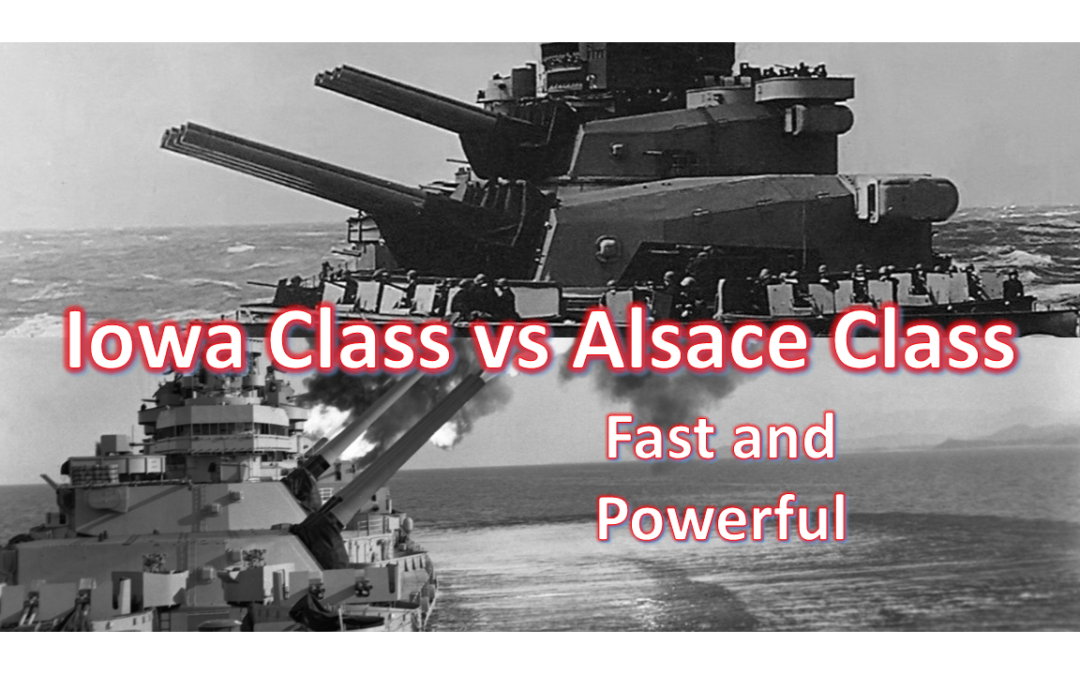
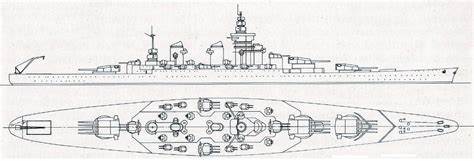
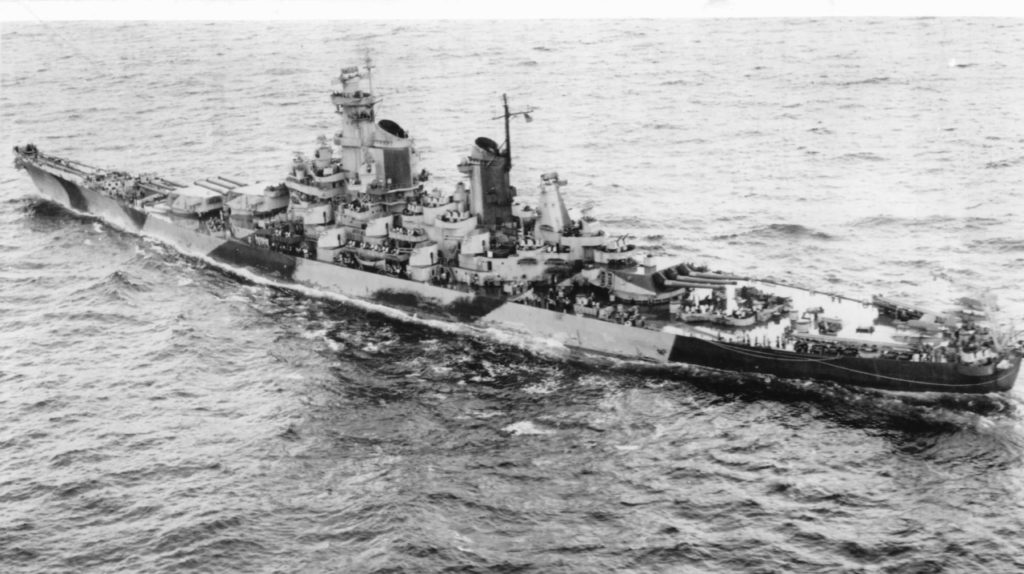
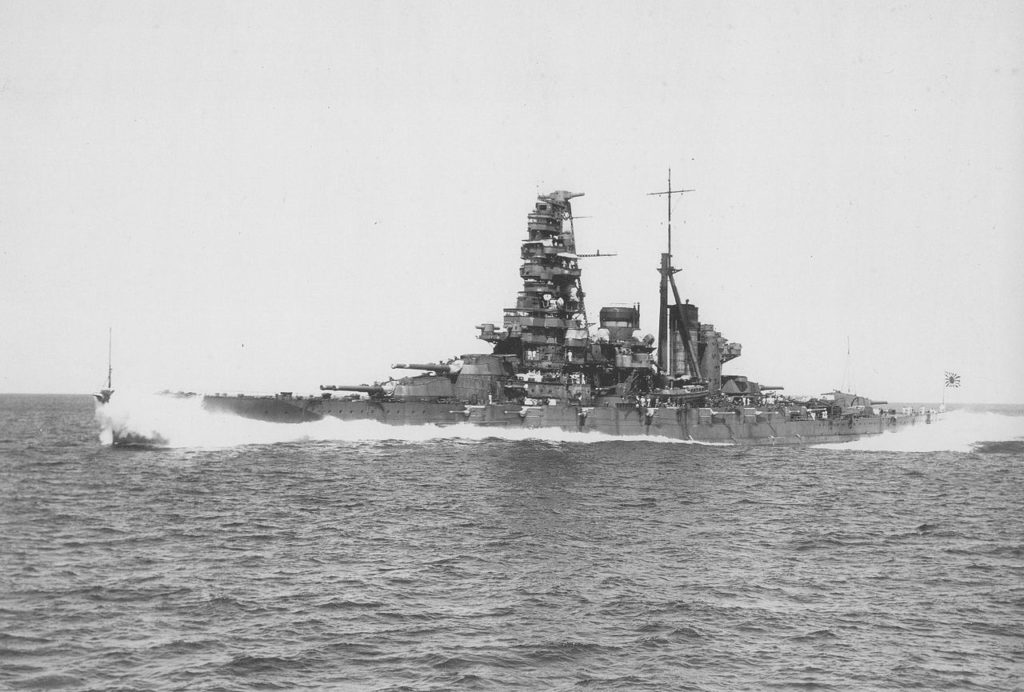
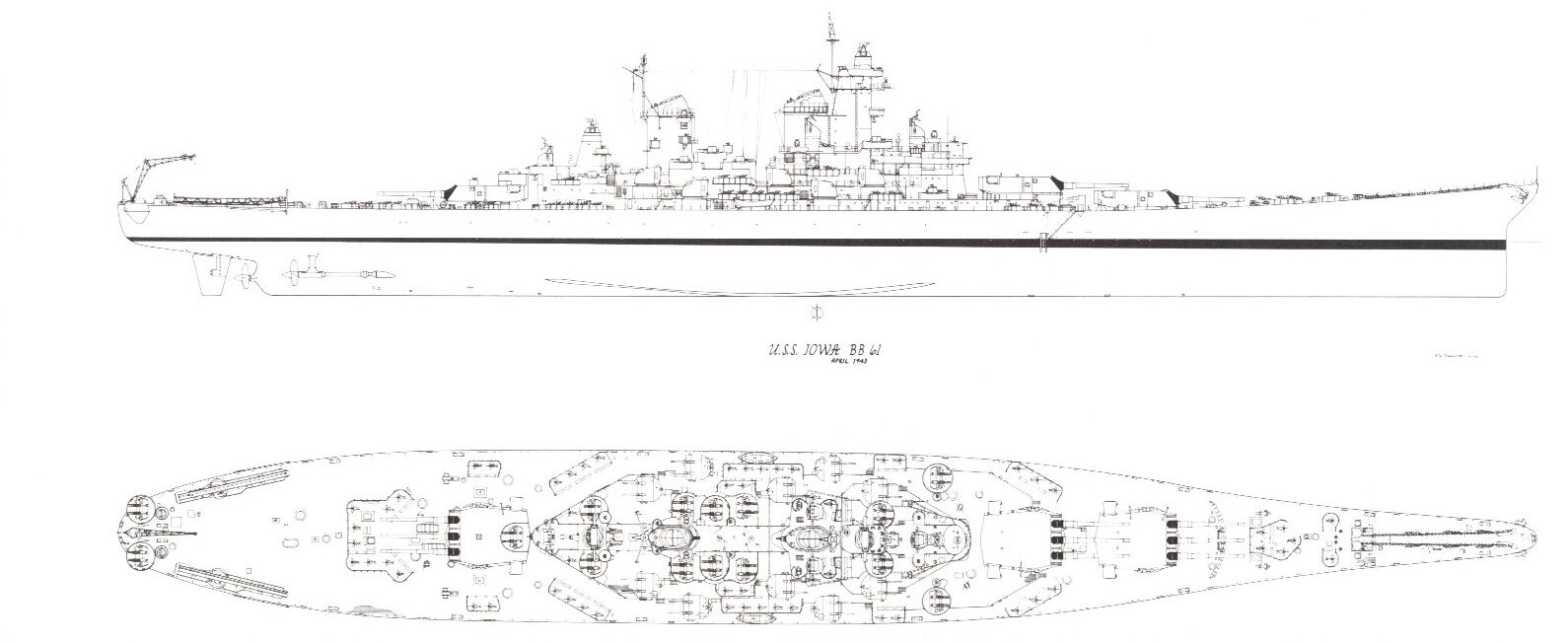
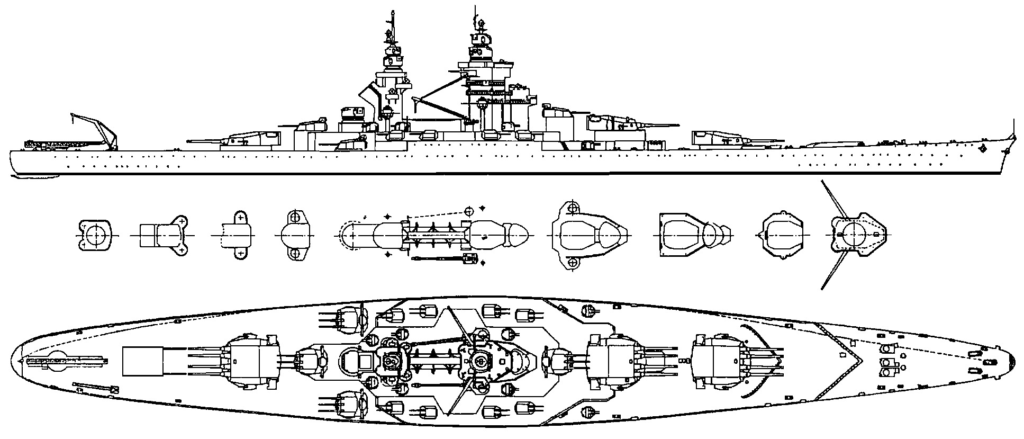
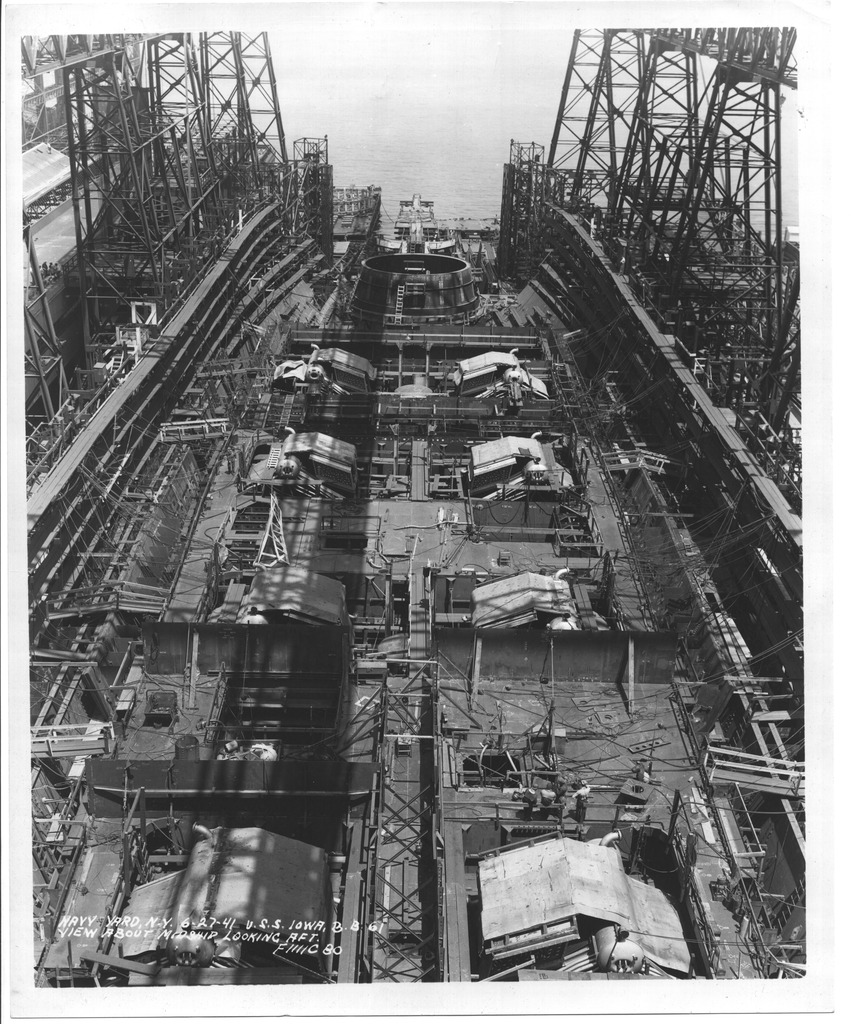
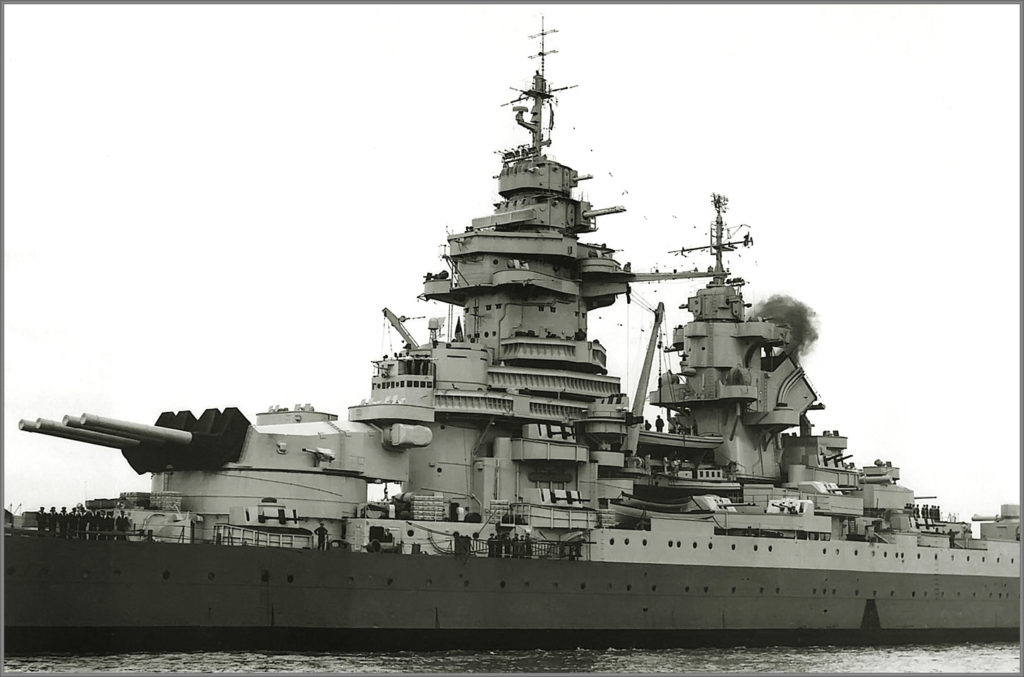
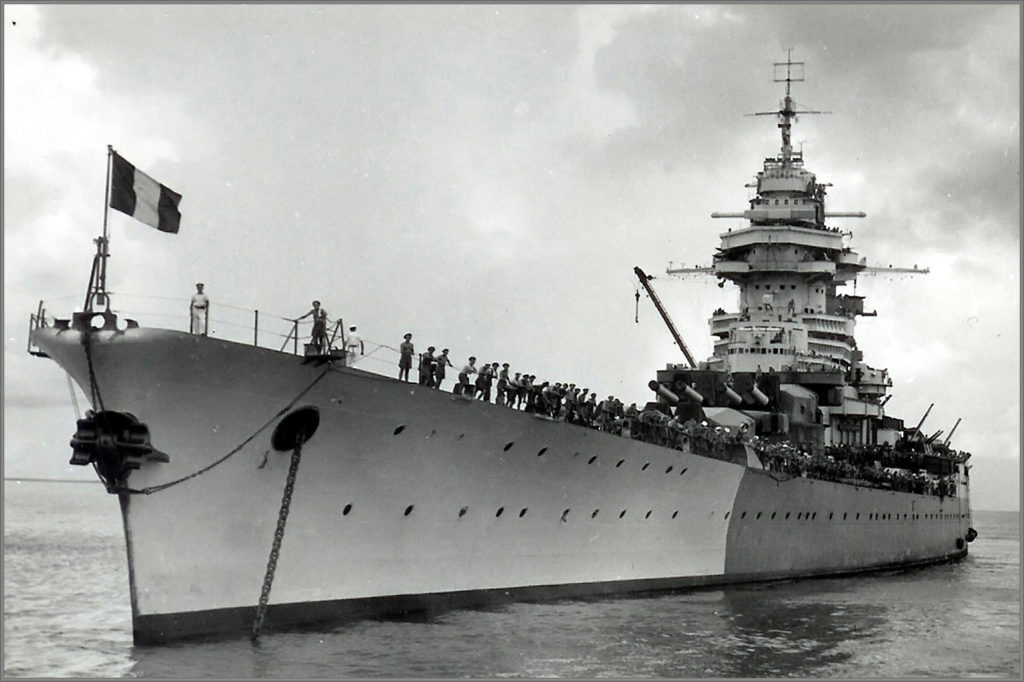
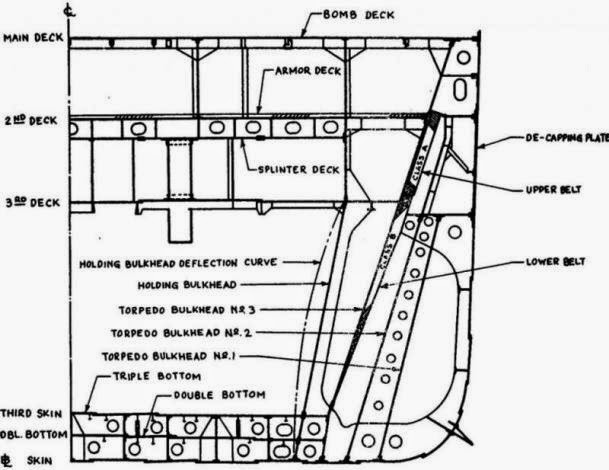
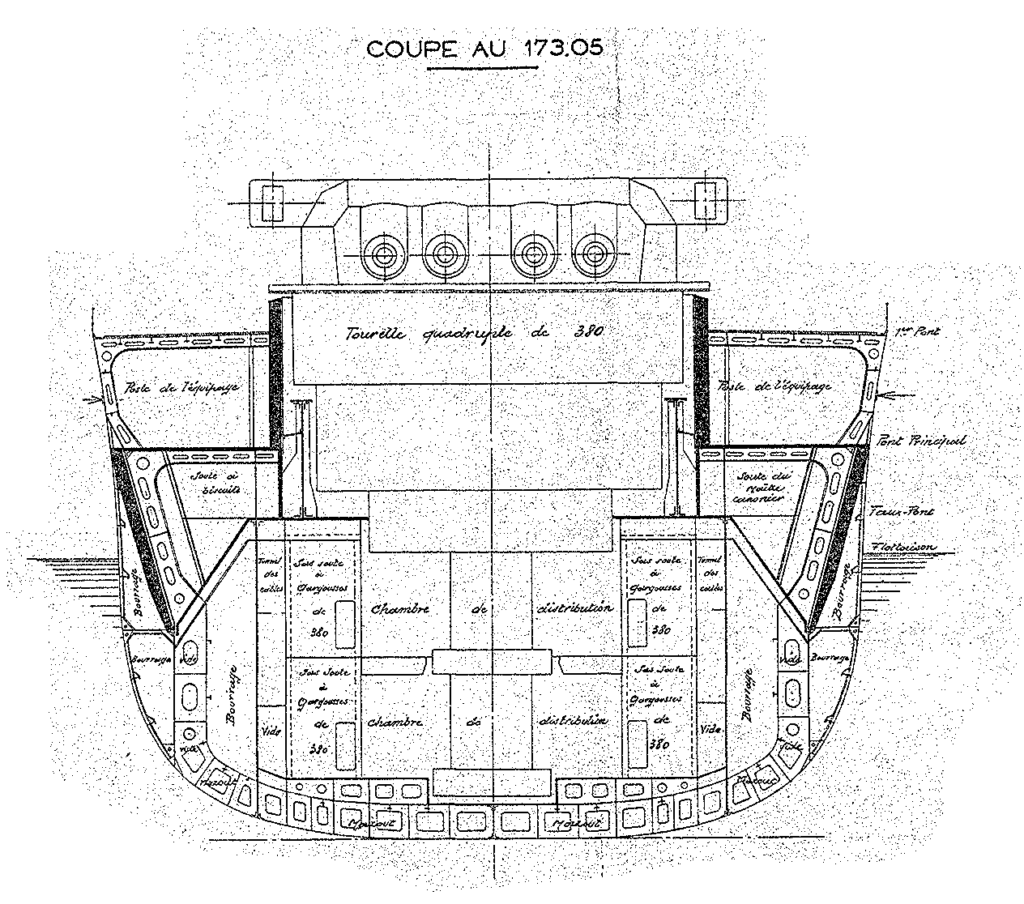
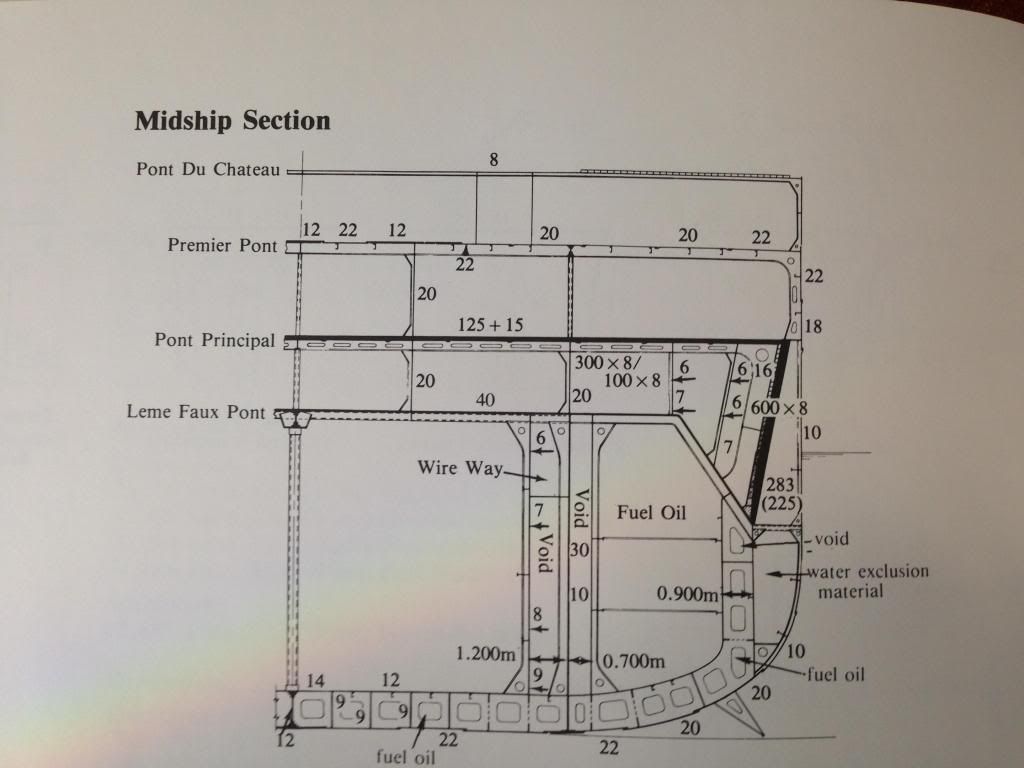
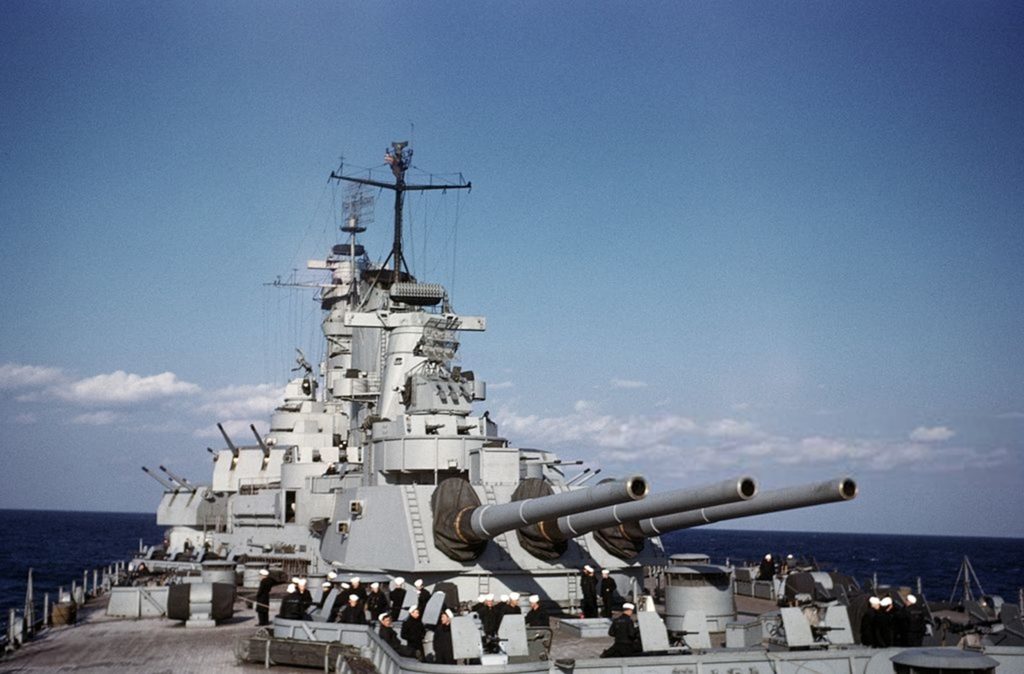
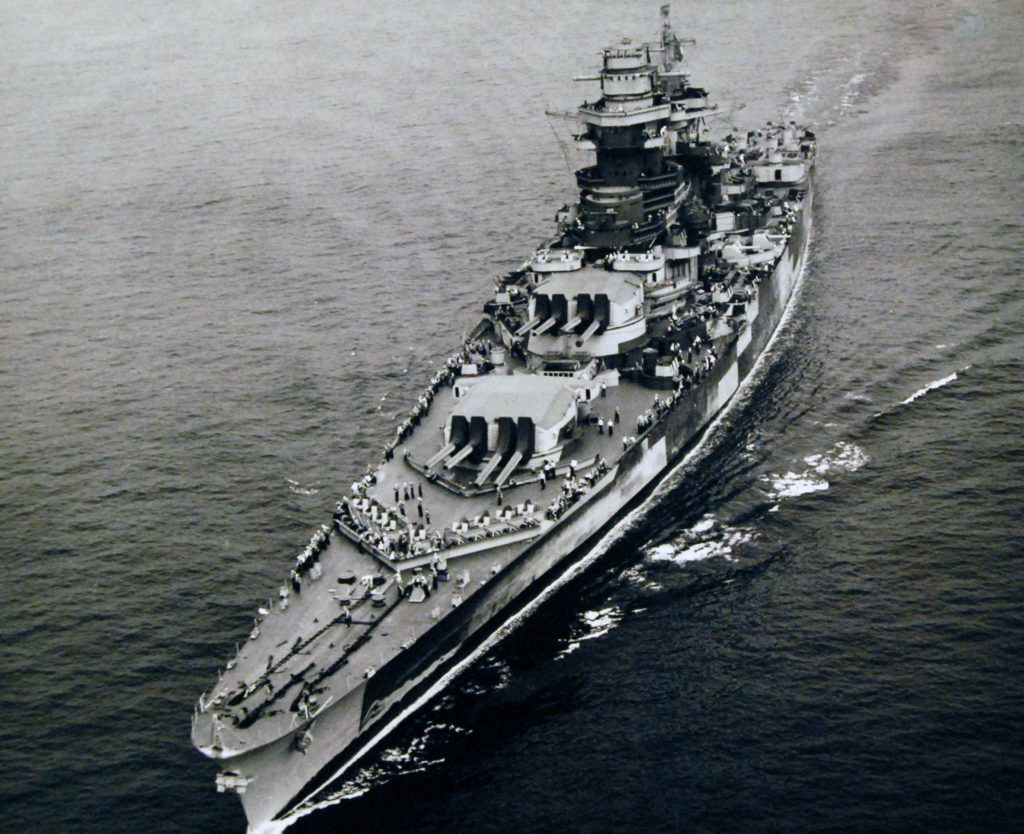
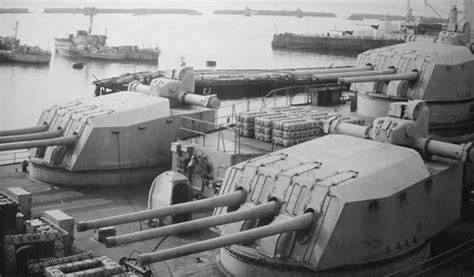
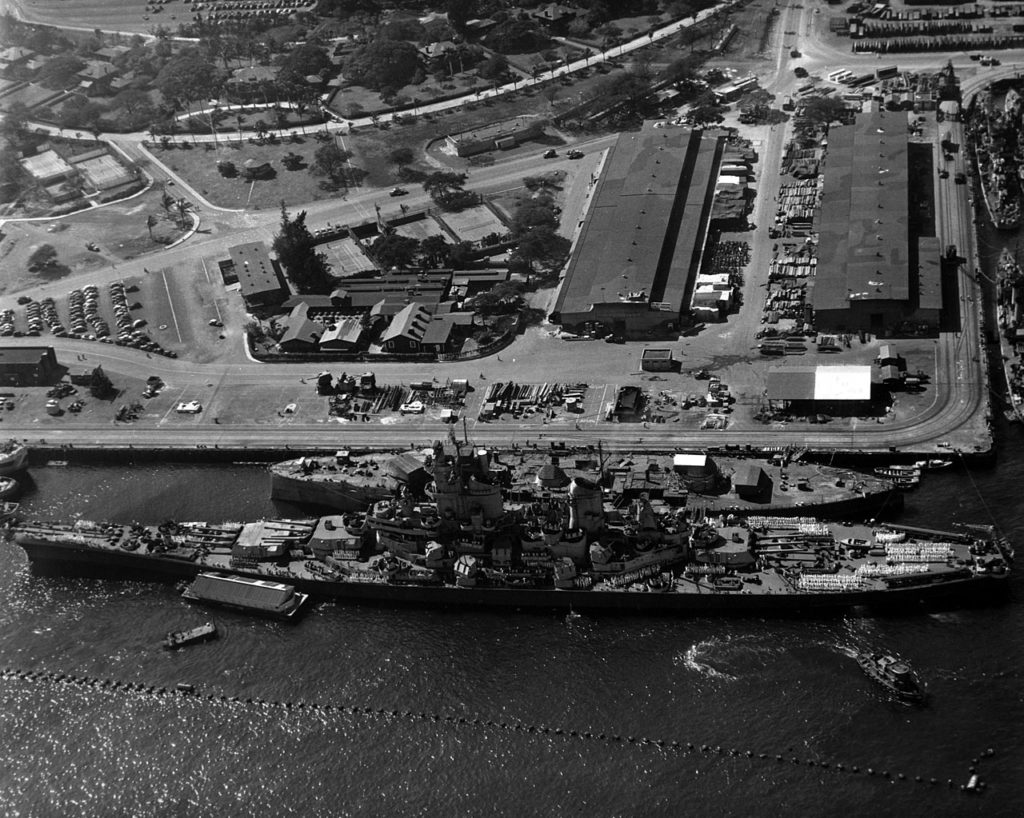
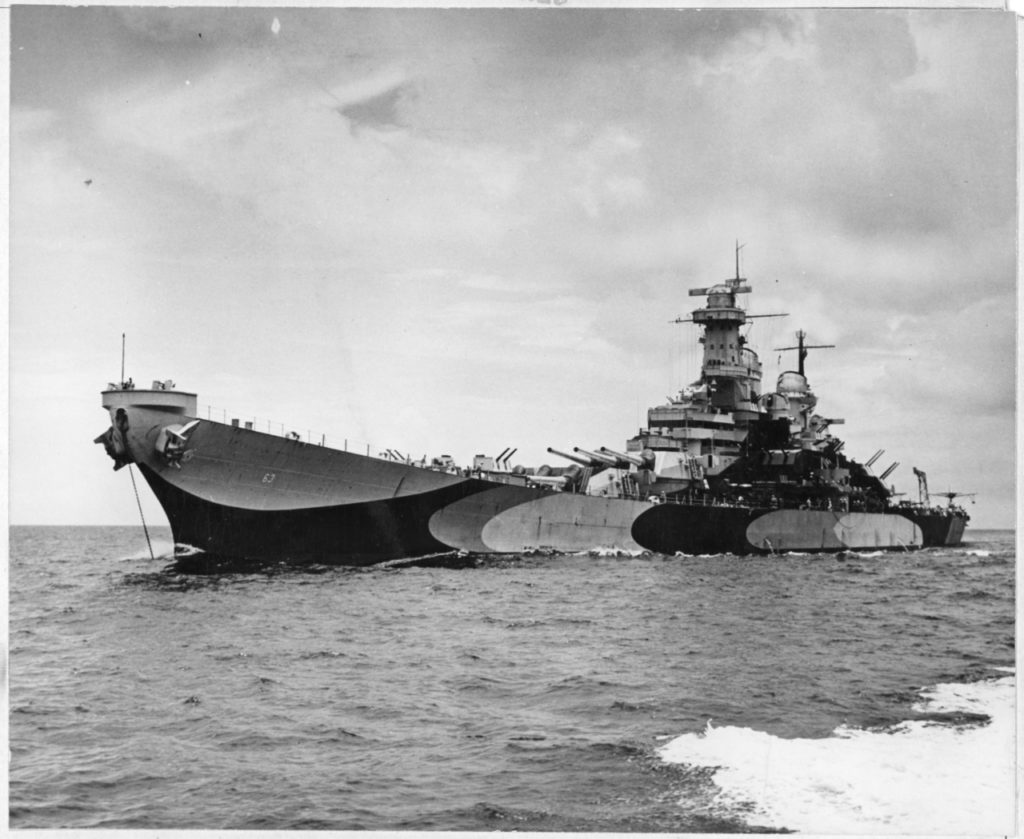
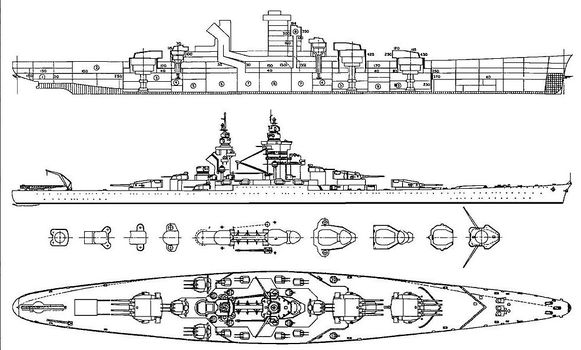

Recent Comments